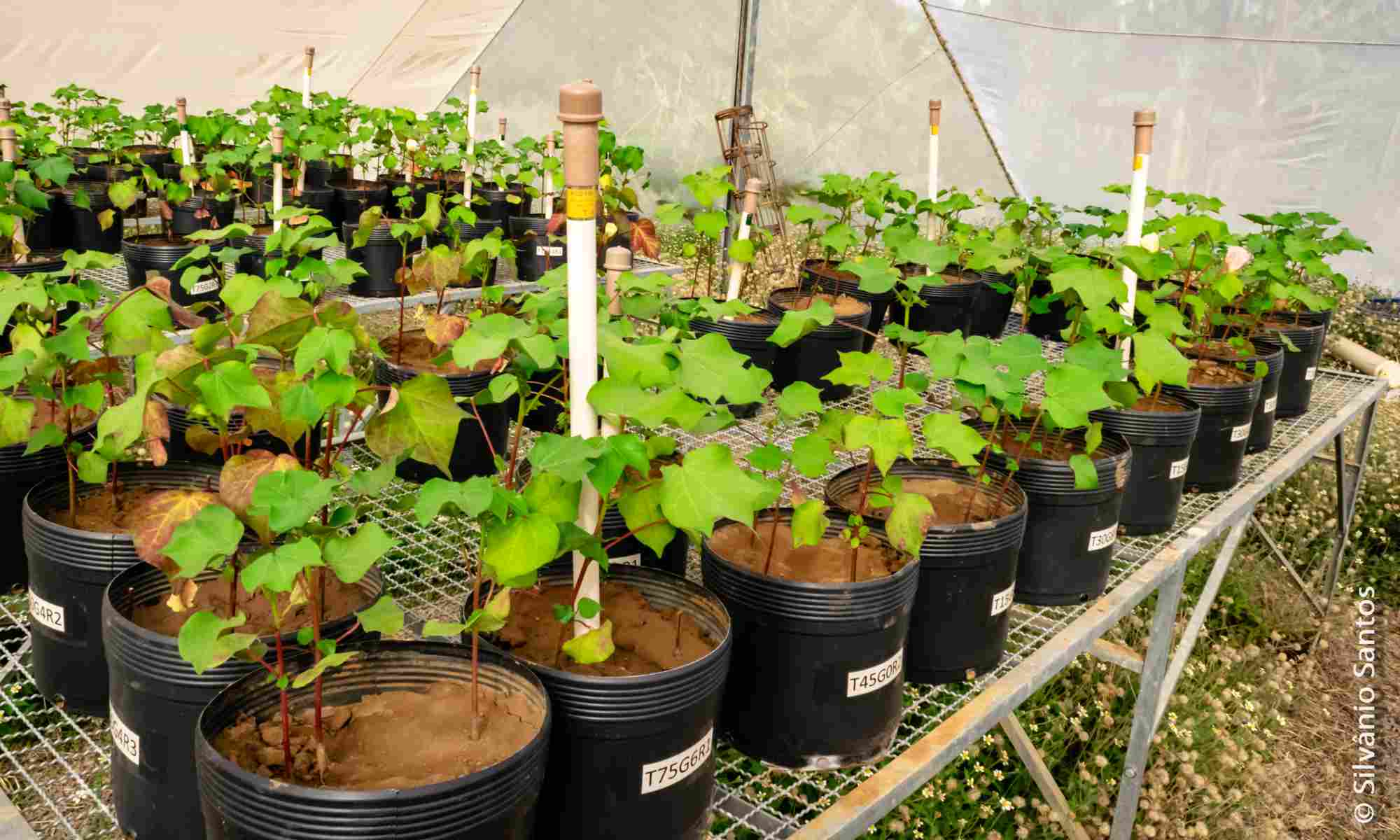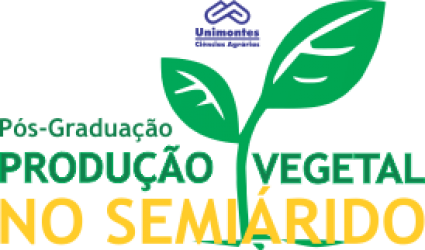- Version
- Download 28
- Tamanho do Arquivo 763.05 KB
- Data de Criação 16/06/2021
- Download
LÉDO, Alex Aguiar. Atributos químicos do solo, teores foliares de nutrientes e produtividade de bananeiras tipo prata sob diferentes sistemas de irrigação. 2010. 59 p. Dissertação (Mestrado em Produção Vegetal no Semiárido) – Universidade Estadual de Montes Claros, Janaúba, 2010.
Genótipos de bananeira sob diferentes sistemas de irrigação podem diferir quanto à produtividade. Isto decorre da variação na aplicação da água que pode alterar a distribuição do sistema radicular, os atributos químicos e o fluxo difusivo de nutrientes no solo e, consequentemente, os teores de nutrientes na planta. Pode resultar também, de diferenças na eficiência de absorção de nutrientes entre genótipos. Este trabalho objetivou avaliar os atributos químicos do solo, os teores foliares de nutrientes e a produtividade em bananeiras tipo Prata, submetidas a diferentes sistemas de irrigação, durante o primeiro ciclo de produção. Adotou-se o delineamento experimental em blocos casualizados, com seis tratamentos dispostos em esquema fatorial 3 x 2, três sistemas de irrigação (aspersão convencional, microaspersão e gotejamento) e dois genótipos (‘Prata-Anã’, AAB, e seu híbrido PA42-44, AAAB). Utilizaram-se quatro repetições de parcelas em fileira, com seis plantas úteis, bordadura completa e espaçamento de 3,0 x 2,5 m. Procederam-se amostragens de solo na profundidade de 0-20 cm, na região de distribuição de adubos a lanço e amostragens de folhas na terceira folha, aos 90, 180 e 360 dias após o plantio, correspondente às fases de crescimento vegetativo inicial, florescimento e colheita, respectivamente. Determinaram-se pH, MO, P, K, Ca, Mg, Na, H + Al, SB, T, V e CE para as amostras de solo, e os teores de N, P, K, Ca, Mg, S, B, Cu, Fe, Mn e Zn para as amostras de folha. Avaliou-se ainda a produtividade das bananeiras. Os dados foram submetidos à análise de variância para verificação da significância das interações. Na ausência destas, analisaram-se os efeitos significativos dos fatores isolados e compararam-se as médias pelo Teste de Tukey a 5% de probabilidade. Interações significativas entre genótipos e sistemas de irrigação foram constatadas apenas para P, aos 90 dias, dentre os atributos do solo analisados. ‘Prata-Anã’ e PA42-44 diferiram significativamente sob os sistemas de irrigação por aspersão e gotejamento, com maiores valores de P no solo cultivado com o híbrido. Para a ‘Prata-Anã’ os teores de P no solo foram similares nos três sistemas de irrigação e para PA42-44 os teores de P, sob gotejamento, superaram os de microaspersão. Os atributos químicos pH, P, MO, K, Ca, SB, T e V no solo cultivado com ‘Prata-Anã’ foram significativamente menores do que com PA42-44, independente dos sistemas de irrigação. Os atributos químicos do solo enquadram nas faixas de suficiência para bananeira ‘Prata-Anã’. Os genótipos e os sistemas de irrigação apresentaram interações significativas para os teores foliares de B e Cu aos 180 dias. ‘Prata-Anã’ e PA42-44 diferiram entre si para os teores foliares de N, P, K, Ca e Mg, independente dos sistemas de irrigação. Os teores foliares dos nutrientes enquadram na faixa adequada ou acima, à exceção do B avaliado aos 90 dias após o plantio. Os menores teores foliares de micronutrientes ocorrem sob gotejamento. Os genótipos ‘Prata-Anã’ e PA42-44 apresentam produtividades similares sob os diferentes sistemas de irrigação
Termos para indexação: Musa spp., genótipos AAB e AAAB, fertilidade do solo, avaliação nutricional.
Chemical soil attributes, leaf nutrient contents and productivity of banana trees type Prata under different irrigations systems
Banana genotypes under different irrigation systems may differ as for the productivity. This is due to variation in the water application, that can alter the distribution of the root system, the chemical attributes and the flow diffuse of nutrients in the soil and, consequently, the nutrient contents in the plant. It may also result, of differences in the nutrients absorption efficiency between genotypes. This work aimed to evaluate the chemical soil attributes, the leaf nutrient contents and the productivity in banana trees type Prata, submitted to different irrigation systems, during the first production cycle. The experimental design was in randomized blocks, with six treatments disposed in factorial scheme 3 x 2, three irrigation systems (conventional sprinkler, microsprinkler and drip) and two genotypes ('Prata-Anã', AAB, and its hybrid PA42-44, AAAB). Four repetitions of parcels in row were used, with six useful plants, whole border and spacing of 3,0 x 2,5 m. Soil samples were taken in the 0-20 cm depth, in the area of fertilizers distribution at throw and leaf samplings in the third leaf, to 90, 180 and 360 days after the planting, corresponding to the phases of initial vegetative growth, flowering and harvest, respectively. Were determined pH, MO, P, K, Ca, Mg, Na, H + Al, SB, T, V and CE for the soil samples, and levels of N, P, K, Ca, Mg, S, B, Cu, Fe, Mn and Zn for the leaf samples. It was also evaluated the banana productivity. The data were submitted to variance analysis for verifying the significance of interactions. In the absence of these, the significant effects of the isolated factors were analyzed and the averages were compared by the Tukey’s Test to 5% of probability. Significant interactions between genotypes and systems irrigations were verified just for P, to 90 days, amongst the soil attributes analyzed. 'Prata-Anã' and PA42-44 differed significantly under the irrigation systems for sprinkler and drip, with larger values of P in the soil cultivated with the hybrid. For 'Prata-Anã', the levels of P in the soil were similar in the three irrigation systems and for PA42-44 the P levels, under drip, overcame the microsprinkler one. The chemical attributes pH, P, MO, K, Ca, SB, T and V in the soil cultivated with 'Prata-Anã' were significantly smaller than that with PA42-44, independent of the irrigation systems. The chemical soil attributes are in the sufficiency ranges for banana tree 'Prata-Anã.' The genotypes and the irrigation systems presented significant interactions for the leaf contents of B and Cu to 180 days. 'Prata-Anã' and PA42-44 differed between themselves for the leaf contents of N, P, K, Ca and Mg, independent of the irrigation systems. The leaf contents of the nutrients are in the appropriate range or above it, except B to 90 days after the planting. The smallest leaf contents of micronutrients happen under drip. The 'Prata-Anã' and PA42- 44 genotypes present similar productivities under the different irrigation systems
Index terms: Musa spp., genotypes AAB and AAAB, soil fertility, nutritional evaluation.

